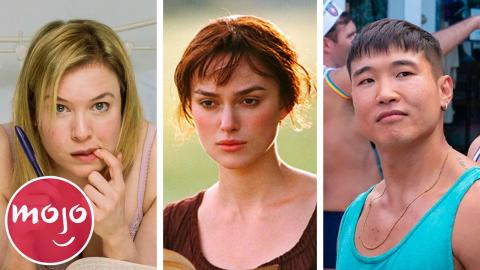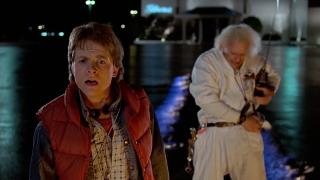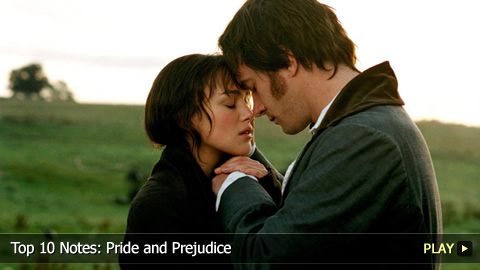Comparing ALL the Pride & Prejudice Movies

The Big Family
Top 10 Best Live Action Movies to Watch as a Family
The Bennet family, and more importantly the Bennet sisters, are the backbone of “Pride and Prejudice”. Jane, Mary, Kitty, Lydia, and Elizabeth each have distinct personalities that push the story’s narrative along and help create the full, realized world we love. In most adaptations of “Pride and Prejudice,” the Bennet sisters stay intact. However, there are notably two more modern takes on the story that switch things up a bit. In the 2001 film “Bridget Jones's Diary,” Bridget doesn’t appear to have siblings, a group of friends taking the place of the Bennets. These friends are largely inconsequential to the tale, something that’s further updated with 2022’s “Fire Island.” In that movie, each of Noah’s friends stands in for a sister, and the fivesome are as close as family.
Class Conflict
In Jane Austen’s novel and most iterations of the story, class conflict plays a large part in the divide between Mr. Darcy and Elizabeth. One of his biggest hang-ups about his feelings for her is the difference in their social status. During the time when the story was originally written, this perceived difference would have realistically caused an issue for the two of them. However, many modern adaptations of “Pride and Prejudice” tweak and twist this aspect around to fit an updated experience. The central couple in “Fire Island” have to navigate the different ways they fit into the gay social scene on the titular island. With that comes themes of status and yes, class, but in a context centering the LGBTQIA+ community.
Jane Bennet & Mr. Bingley
10 Movies You Didn't Know Were Inspired by Jane Austen
Just as Mr. Darcy and Elizabeth are the essential piece of “Pride and Prejudice,” Jane and Mr. Bingley are their essential support. After all, every good couple needs a supporting couple. And so much of the conflict between Elizabeth and Darcy stems from how fiercely protective they are over their respective sister and best friend. “Fire Island” replicates this protective quality in a very similar way, with Howie and Charlie corresponding to Jane and Bingley. Even “Pride + Prejudice + Zombies” incorporates the characters. So how do some other modern adaptations get away with eliminating the duo altogether? “Bridget Jones’s Diary” actually does so quite smartly by changing one of the story’s major themes to be loneliness. The titular protagonist is initially struggling to come into herself, and though she has friends, much of her journey ends up being an introspective one. By taking the Jane character out of the equation, Bridget’s sense of isolation — and subsequent growth — is further explored and built upon.
Why Doesn’t Mr. Darcy Like Elizabeth at First?
Top 10 Notes: Pride and Prejudice
While class comes into the equation quite a bit in “Pride and Prejudice,” there are some other reasons why Mr. Darcy is initially averse to Elizabeth. At a dance, he claims that he doesn’t think she is very pretty, something which she overhears. Funnily enough, some modern updates to the material keep a version of this as one of Mr. Darcy’s original faux pas. In “Bridget Jones’s Diary,” Bridget hears Colin Firth’s character share that he is disturbed by the way she dresses and acts. That’s actually fairly typical and on brand for an early 2000s romantic comedy, wouldn’t you say? Meanwhile, the Mr. Darcy character's distaste in “Fire Island” isn’t so much based on looks. But it does lie in a dislike of the way the Elizabeth stand-in and friends conduct themselves.
Can Mr. Darcy & Elizabeth Be the Same Gender?
Top 100 Greatest Romance Movies of All Time
While “Pride and Prejudice” is generally told as a heteronormative story, there’s nothing about the bones of the novel that necessitate that. Love — and the challenges that come with it — aren’t gendered. In 2022, “Fire Island” proved that to be the case. However, the movie is not unaware of the straight, white history of the story it’s retelling. The main character, Noah, even pokes fun at the idea that someone like him could exist in a Jane Austen tale toward the beginning of the film. But judgment and people’s hubris exists in all relationships, regardless of the gender of the two people involved. “Fire Island” understands that, and expertly incorporates all the best elements of Austen’s beloved work while modernizing the rom-com to spotlight an oft-marginalized community. The result speaks for itself. Looking forward, we hope to see way more queer representations of Jane Austen on screen.
The Kiss at the End
Comparing All the Romeo & Juliet Movies
This portion of the “Pride and Prejudice” tale connects to a very important aspect of the story, how that’s modernized, and the ensuing debates. Allow us to get specific. The 2005 “Pride & Prejudice” film starring Keira Knightley and Matthew Macfadyen is one of the most beloved adaptations of all. However, there is some dispute over which ending is the best. When the film was released in the United Kingdom, there was no kiss between Elizabeth and Mr. Darcy at the end. However, for the North American release, the filmmakers added one to try and appease romantic audiences. Many fans took great issue with this change, calling it “inconsistent” with the style of the movie and Austen herself. Where do you stand?
Intimacy in “Pride and Prejudice”
The issue of the kiss leads us to our final point of comparison. How do filmmakers incorporate intimacy into modern adaptations of “Pride and Prejudice?” In Jane Austen’s work, the sexual chemistry lies in the language, in lingering touches, in the general sense of yearning. Modern versions of the story have mostly stayed loyal to that, but it’s not an exact science, either. In “Fire Island” and “Bridget Jones’s Diary,” intimacy exists in the world of the protagonists. Indeed, both Bridget and Noah get intimate, albeit with people who are not Mr. Darcy (or his equivalent). When it comes to the Darcy character himself, the sexual interplay is still largely subtextual. The films rely on the chemistry of the leads to bring it to life in subtle but incredibly effective ways. In the end, modern adaptations of Jane Austen’s “Pride and Prejudice” have found new and clever ways to take a centuries old love story and make it feel fresh. We have butterflies in our stomachs just thinking about it!






